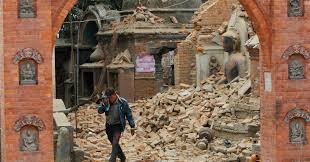Black holes and brain damage - can there be anything common between them? They may sound like chalk and cheese but they have something in common. Study of both requires modern tools of big data analysis.
I use the same technique in finding out various kind of objects in cosmos that a brain scientist uses in EEGs to find abnormalities in brains and also heart beats in ECGs. Now we are working together to develop new techniques, says Prof Somak Raychaudhury, director of Pune-based Inter-University Centre for Astronomy and Astrophysics (IUCAA). He is internationally acclaimed for his contributions to the study of super clusters of galaxies, the largest structures of celestial objects that dot the universe.
Once upon a time, universe was thought to be a placid place. Not anymore. “We now know that galaxies interact with each other. We see galaxies smashing into each other, eating each other up, tearing each other apart and so there is lots of action going on in the universe. We are interested to know what happen when they interact, what will happen to our galaxy and what has happened to other galaxies in the past. We have a very fundamental interest in knowing how galaxies are born and how they evolve”, he said in an interview.
Raychaudhury is interested in galaxies as they are the basic building blocks of the university and they change over time. Like stars clump together and form galaxies, galaxies clump together to form galactic clusters. He wants to know why it happens, how it happens.
"I use the same technique in finding out various kind of objects in cosmos that a brain scientist uses in EEGs to find abnormalities in brains and also heart beats in ECGs. Now we are working together to develop new techniques”
One of his special research interests is studying what is called `super cluster filaments of the cosmic webs’. Explaining, he notes that galactic clusters do not remain in isolation. They arrange themselves into a finer structure at an even larger scale. “The arrangement seems to be like the web of a spider, with most of the galaxies concentrated along the web.”
During his highly illustrious career, Prof. Raychaundhury has made outstanding contributions in the study of stellar mass black holes and super massive black holes. A stellar black hole is the one formed by gravitational collapse of a massive star. They have masses ranging from about five times to several 10s of solar masses. Most galaxies have black holes at their centre. There are different types of black holes and each of them has different mass.
We cannot see a black hole. But then, how do we know it is there? He explains that this is done by computing the speed of stars orbiting within different galaxies. Through this, one can know whether there is any massive object at the centre of any galaxy. By looking at objects near the galaxies’ centre, it is possible to estimate their size. If a large mass is seen to be compacted in a small space, then it should be a black hole.
Prof. Raychaudhury has also worked for 10 years at the Giant Meterwave Radio Telescope (GMRT) at Pune. He was involved in developing machine learning algorithms for astronomical data collected by the telescope. He is excited over the involvement of India in major global astronomical projects which are on the anvil such as LIGO, Thirty Meter Telescope and Square Kilometre Array. Under the LIGO project, India will build the third gravitational waves LIGO detector. ``The work will start soon and will take 10 years to build the detector’’, he noted.
On Thirty Meter Telescope project, he noted that India has signed for 10 per cent of the project and pointed out that Indian scientists would be working in collaboration with their counterparts from several countries including China, Japan and US.
Regarding the Square Kilometre Array project, in which India will play a vital role as it is now an associate member of CERN, he noted that the advanced radio telescope would produce huge quantities of data. The Array is expected to produce more data per second than the total daily traffic on the entire internet as of now. Its central computer will have the processing power of about 100 million computers and it will use optical fibre along enough to wrap twice around the earth. More than 350 scientists and engineers representing 18 countries and100 institutions, universities, and industry will work on the design phase.
He is also associated with Astrosat, India’s first dedicated multi-wavelength space observatory, which was launched two years ago. A unique feature of the satellite is that it enables observation of celestial objects at different wavelengths simultaneously.
Noting that students from Indian institutions will now easy access to world class facilities for research, he said, “we need more engineers to build more telescopes and more scientists to make use of the data that is coming out. As astronomy is a mutli-disciplinary field, we will need human resources from various disciplines’’ (India Science Wire)


